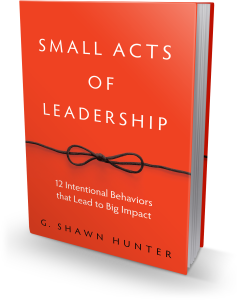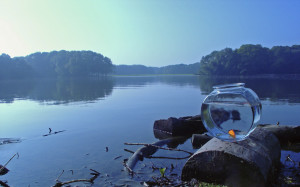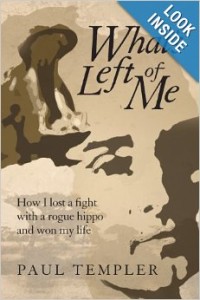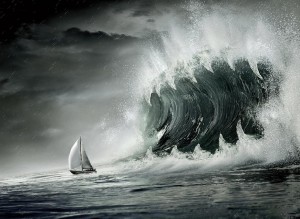The Busier You Are, The More You Need a Break

In this short study we asked many questions about how we, all busy professionals, spend our days – when we wake up, how long our commute is, how many texts and emails we receive each day, how many meetings we sit through, how much exercise we get, and even how many cups of coffee we drink.
And then we asked a few questions about our sense of happiness, contentment, productivity, and how much of the time we feel “at our best.” The objective of the study was to understand how our daily behaviors impact our sense of well-being, productivity, and happiness – in our work, in our communities, and with our families.
Some of what we discovered may not surprise you, but one insight might: The busier we are in our work, the more we need to both schedule, and take, regular breaks in our day in order to sustain high levels of happiness and productivity. The happiest, and most productive professionals, take regular mini-breaks throughout the day. And the more responsibility we have, the more important this becomes.
Here is some of what we discovered:
Individual Contributors, that is professionals who are not bosses, with no direct reports, suffer through the fewest number of meetings, receive the least number of emails and texts (although 24% stated they receive over 50 per day), have the shortest commute to work, and for the most part are good at leaving work at work. Only a third of this group spend more than 40 hours a week in the office. These individual contributors and team members also reported the least amount of hours working outside of work – at home, in coffee shops, etc.
The majority of Managers surveyed stated they had about two to six members on their team, received slightly higher volumes of email and text messages regarding work, and unsurprisingly had to sit through a few more meetings each day. Managers also described slightly higher commuting distances, presumably because they were willing to travel farther for their position. This group is getting about the same amount of sleep as their individual contributor counterparts, but dedicating a little more time each week to exercise.
Apparently gone are the days of Executives having martini lunches and golfing twice a week, because in our survey the Executive group overwhelmingly reported the highest volume of emails (31% say they receive over 100), nearly twice as many meetings (many up to 6 meetings per day!), and up to 80 hours of being connected to work each week, both at the office and elsewhere. This group also travels the farthest to work, and unsurprisingly spends the most amount of time on airplanes. However, the Executive group also reported the most hours dedicated to sleep and exercise.
Here’s the piece of data that surprised us:
Contributors and Managers reported comparable levels of happiness and productivity, and comparable number of mini-breaks in their work day to refresh and recharge. And those with the least work obligations suffered the least when they did not take regular breaks.
Meanwhile, we found that the greater the responsibility and obligations we have, in terms of meetings, direct reports, email correspondence, travel, etc… the more important the mental breaks become. Those with the highest volume of meetings, emails, obligations and distractions reported a much greater drop in productivity at work, and satisfaction in all aspects of their lives when they did not take mindful, and intentional breaks in their day.
Do yourself, your work, and your family a favor. Take a break.

 Our company
Our company 
 Jeri Finard has made some valuable decisions on her way to the highest echelons of business. She stopped trying really hard to get ahead, she listened closely to trusted mentors, and she stopped following the conventional wisdom of focusing on your competition.
Jeri Finard has made some valuable decisions on her way to the highest echelons of business. She stopped trying really hard to get ahead, she listened closely to trusted mentors, and she stopped following the conventional wisdom of focusing on your competition.
 We live on a street called Bayview. There’s no view of the bay. At least not from our house. The actual view of the bay is through the trees about a quarter mile beyond a stand of pines down to a boatyard behind our house. With three young kids, living by the ocean I felt we needed a boat, right? A sailboat would heighten our senses, present new challenges and landscapes, offer new adventure.
We live on a street called Bayview. There’s no view of the bay. At least not from our house. The actual view of the bay is through the trees about a quarter mile beyond a stand of pines down to a boatyard behind our house. With three young kids, living by the ocean I felt we needed a boat, right? A sailboat would heighten our senses, present new challenges and landscapes, offer new adventure.
 I have a confession. I used to be a tyrant in the morning. Tyrant might be an exaggeration (or not), but my recollection is that while getting the kids ready for school I spent all of my energy cajoling, prodding, pleading, scolding, and sometimes ranting at my kids to get ready – to put on their shoes, eat their breakfast, brush their teeth, get dressed, put their lunch in their backpacks…, because the bus is coming! My wife has a different, and more effective style, but on my mornings to handle bus time I would conduct diatribes on the inevitability of the bus, and harangue them that unlike procrastinating getting in the car, the bus is coming at an appointed time and they needed to hurry up!
I have a confession. I used to be a tyrant in the morning. Tyrant might be an exaggeration (or not), but my recollection is that while getting the kids ready for school I spent all of my energy cajoling, prodding, pleading, scolding, and sometimes ranting at my kids to get ready – to put on their shoes, eat their breakfast, brush their teeth, get dressed, put their lunch in their backpacks…, because the bus is coming! My wife has a different, and more effective style, but on my mornings to handle bus time I would conduct diatribes on the inevitability of the bus, and harangue them that unlike procrastinating getting in the car, the bus is coming at an appointed time and they needed to hurry up!